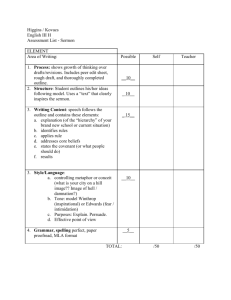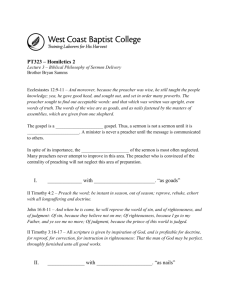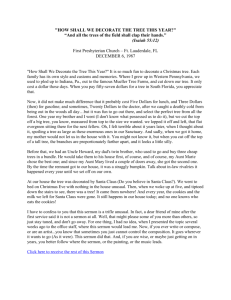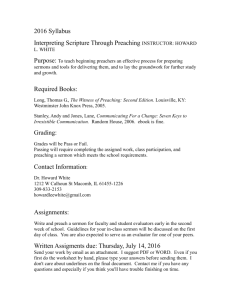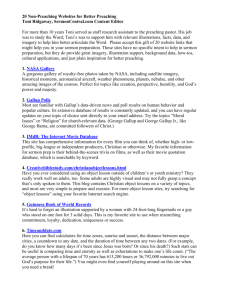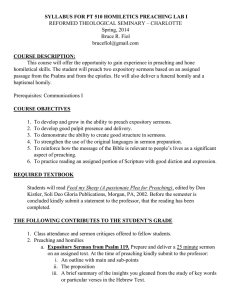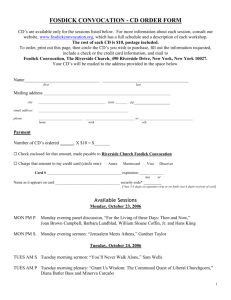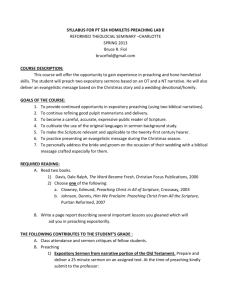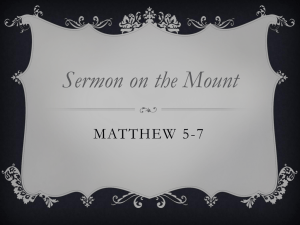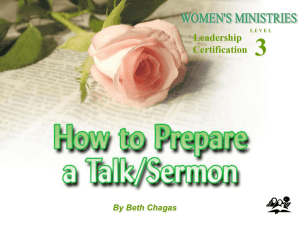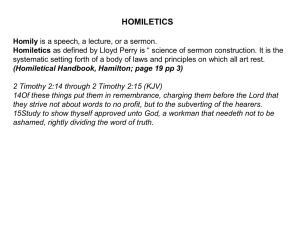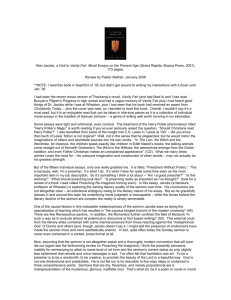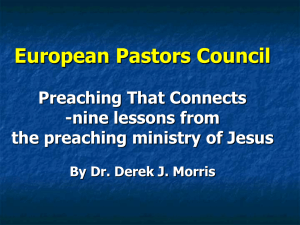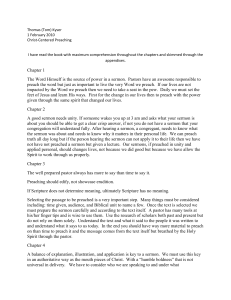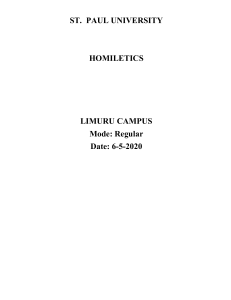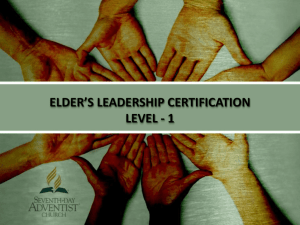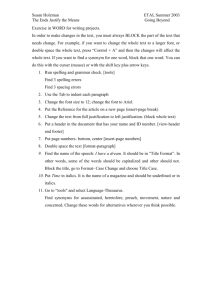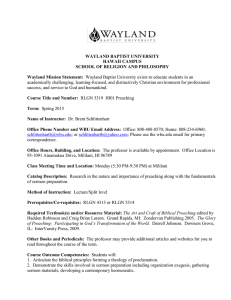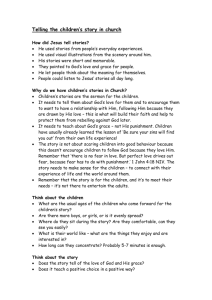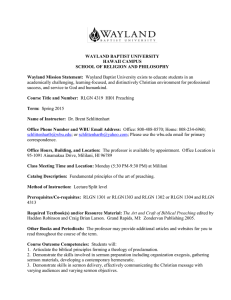My Sermon Worksheet
advertisement
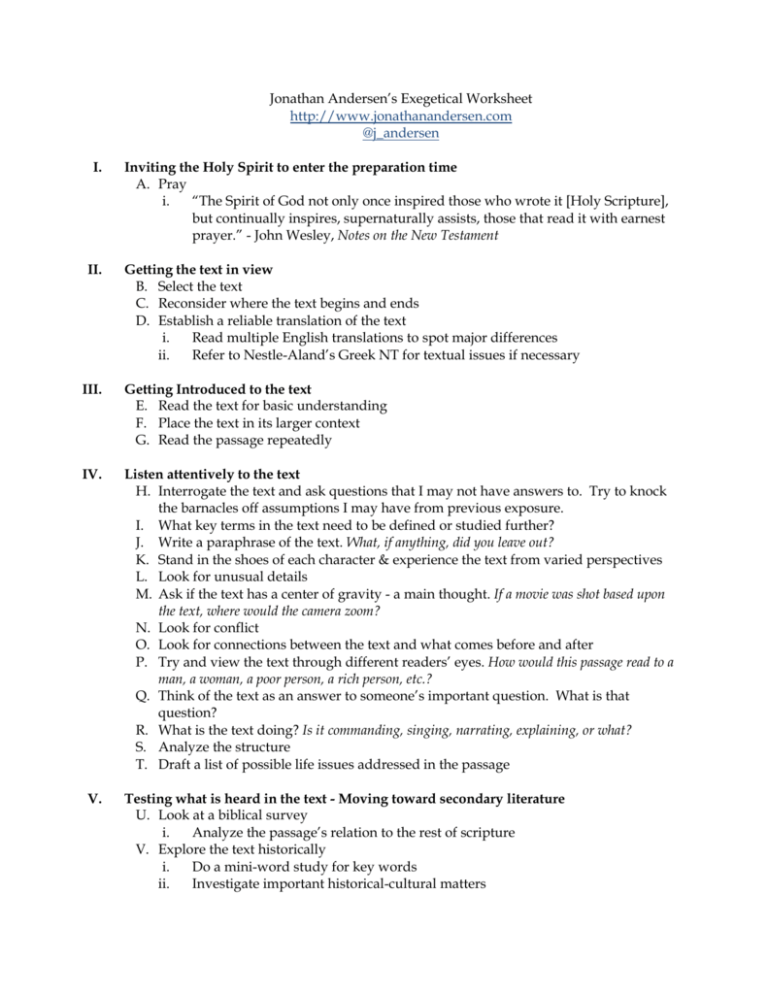
Jonathan Andersen’s Exegetical Worksheet http://www.jonathanandersen.com @j_andersen I. II. Inviting the Holy Spirit to enter the preparation time A. Pray i. “The Spirit of God not only once inspired those who wrote it [Holy Scripture], but continually inspires, supernaturally assists, those that read it with earnest prayer.” - John Wesley, Notes on the New Testament Getting the text in view B. Select the text C. Reconsider where the text begins and ends D. Establish a reliable translation of the text i. Read multiple English translations to spot major differences ii. Refer to Nestle-Aland’s Greek NT for textual issues if necessary III. Getting Introduced to the text E. Read the text for basic understanding F. Place the text in its larger context G. Read the passage repeatedly IV. Listen attentively to the text H. Interrogate the text and ask questions that I may not have answers to. Try to knock the barnacles off assumptions I may have from previous exposure. I. What key terms in the text need to be defined or studied further? J. Write a paraphrase of the text. What, if anything, did you leave out? K. Stand in the shoes of each character & experience the text from varied perspectives L. Look for unusual details M. Ask if the text has a center of gravity - a main thought. If a movie was shot based upon the text, where would the camera zoom? N. Look for conflict O. Look for connections between the text and what comes before and after P. Try and view the text through different readers’ eyes. How would this passage read to a man, a woman, a poor person, a rich person, etc.? Q. Think of the text as an answer to someone’s important question. What is that question? R. What is the text doing? Is it commanding, singing, narrating, explaining, or what? S. Analyze the structure T. Draft a list of possible life issues addressed in the passage V. Testing what is heard in the text - Moving toward secondary literature U. Look at a biblical survey i. Analyze the passage’s relation to the rest of scripture V. Explore the text historically i. Do a mini-word study for key words ii. Investigate important historical-cultural matters W. Explore the literary character of the text X. Explore the text theologically i. Connect the narrative or poetic or historical content of a text with the ways of thinking the Christian tradition has used to make sense of itself ii. Analyze the passage’s use in and relation to the church’s theological tradition Y. Check the text in commentaries i. Make summarizing notes of each commentary consulted VI. Moving toward the Sermon A. What is this story doing to change our thinking, willing, and living as God’s people? B. State the claim of the text upon the hearers i. In relation to those who will hear the sermon, what this texts wants to say and do is…. C. Form a focus statement i. A concise description of the central, controlling, and unifying theme of the sermon. The focus is what it’s all about. ii. Focus: D. Form a function statement i. A description of what the preacher hopes the sermon will create or cause to happen for the hearers. Sermons make demands upon the hearers, which is another way of saying they provoke. This is the hoped for change. ii. Function: iii. The focus and function should grow directly from exegesis, should be related, & should be clear, unified, and simple. E. Answer Stanley’s key questions i. What do they need to know? - Information ii. Why do they need to know it? (What happens if a person never discovers the truth you’re going to address?) - Motivation iii. What do they need to do? (Get specific and be creative) - Application iv. Why do they need to do it? - Inspiration v. What can I do to help them remember? – Reiteration F. Crafting the sermon i. Start with the focus and function ii. Divide the overall tasks of the sermon into smaller components iii. Decide the sequence in which these tasks should be done iv. Construct an outline v. Construct the sermon This worksheet was derived from the sources below—primarily The Witness of Preaching. The majority of the steps were taken verbatim without direct citation: Thomas G. Long’s The Witness of Preaching Gordon Fee’s New Testament Exegesis: A Handbook for Students & Pastors Andy Stanley’s Communicating for a Change Joel Green & Michael Pasquarello’s Narrative Reading, Narrative Preaching
